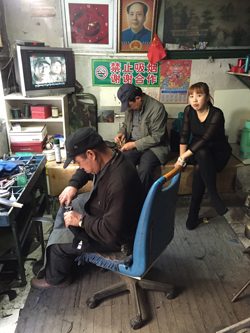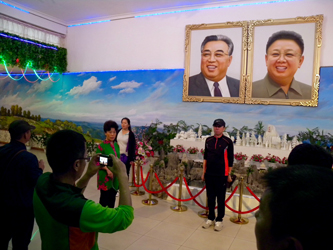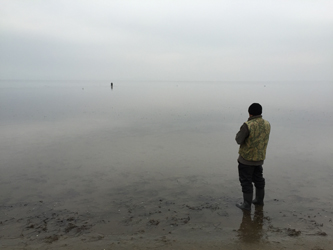Fieldwork in China, Russia and North Korea: Frontiers of History at a Triple Border


 Hunchun, a county-level town in northeast China, lies on the borders of Russia and North Korea (DPRK) and has long been at the centre of a palimpsest of overlapping frontiers of the Manchu, Korean, Han Chinese and Russian worlds. Today inhabited by a mixed population of Han Chinese, Korean Chinese and Manchu residents, and sojourners from Russia, the Koreas and elsewhere, Hunchun in the twenty-first century is a beacon for China’s developmental ambitions in Northeast Asia, a location where everyday lives are saturated with notions of ‘development’, ‘opening’, ‘friendship’, ‘cooperation’ and ‘international’ connection which form the semiotic weft of China’s post-Mao reform era.
Hunchun, a county-level town in northeast China, lies on the borders of Russia and North Korea (DPRK) and has long been at the centre of a palimpsest of overlapping frontiers of the Manchu, Korean, Han Chinese and Russian worlds. Today inhabited by a mixed population of Han Chinese, Korean Chinese and Manchu residents, and sojourners from Russia, the Koreas and elsewhere, Hunchun in the twenty-first century is a beacon for China’s developmental ambitions in Northeast Asia, a location where everyday lives are saturated with notions of ‘development’, ‘opening’, ‘friendship’, ‘cooperation’ and ‘international’ connection which form the semiotic weft of China’s post-Mao reform era.
My research, conducted over 18 months spent translating and making friends in the town and adjacent areas of neighbouring countries, examines how Hunchun residents live through these narratives, which all have complex polysemous histories. Official celebrations of ‘friendly’ Sino-Russo-Korean cooperation in business, tourism and elsewhere capture the boundless optimism of modern Chinese developmentalism but, in a region deeply preoccupied with its own history, also mask much more troublesome pasts which are mobilised in daily interactions between Hunchun’s multinational and multiethnic inhabitants.
From fellow-traveller bonds cemented among migrants, to the military camaraderie of anti-Japanese struggle and the brotherhood of international socialism, a complex inheritance of international encounters continues to colour contemporary relations in Hunchun in positive and negative ways. Hunchun's modern frontiersmen are thus a highly productive source of insight into the prospects and pitfalls of China’s twenty-first-century ‘rise’.
From top right:
China: Even the fully Chinese lives lived in alleys behind Hunchun's noisy Korean- and Cyrillic-dominated shopping streets are strikingly international. Here a lady waits whilst a shoe repair man, who is half-watching a Japanese war drama curiously subtitled in Tibetan, tinkers with her left boot. Another customer, fed up with waiting, is borrowing the cobbler’s tools to have a go at fixing his own footwear.
DPRK: Numerous North Koreans come to Hunchun to work or do business, but more Chinese people go the other way for commercial or leisure purposes. I joined a Chinese tour group departing Hunchun for the neighbouring DPRK port of Rason, a short bus ride away. During the trip, my mostly middle-aged fellow-travellers emphasised how much the place reminded them of China in the 1970s. The cult of the Kim dynasty, whose portraits here hang in the foyer of a special greenhouse for growing flowers named after the leaders, certainly resonates with earlier adulation of Mao Zedong.
Russia: This image is not by accident far less colourful than the others, as the part of Russia’s Primorsky region abutting the borders is much more austere than Hunchun or even Rason. In the dilapidated and depopulated town of Kraskino, a crucial economic lifeline for locals is the poaching of sea cucumbers from the large shallow coves off their stretch of coast. Although illegal (local waters are part of Russia’s only marine national park), the slimy creatures fetch a high price when sold surreptitiously to Chinese traders who smuggle them over the border to be sold in Hunchun shops.
